Fermented Drinks: Simple and Healthy Creations
Apr 30,2021
Fermented Drinks: Simple and Healthy Creations
Apr 30,2021
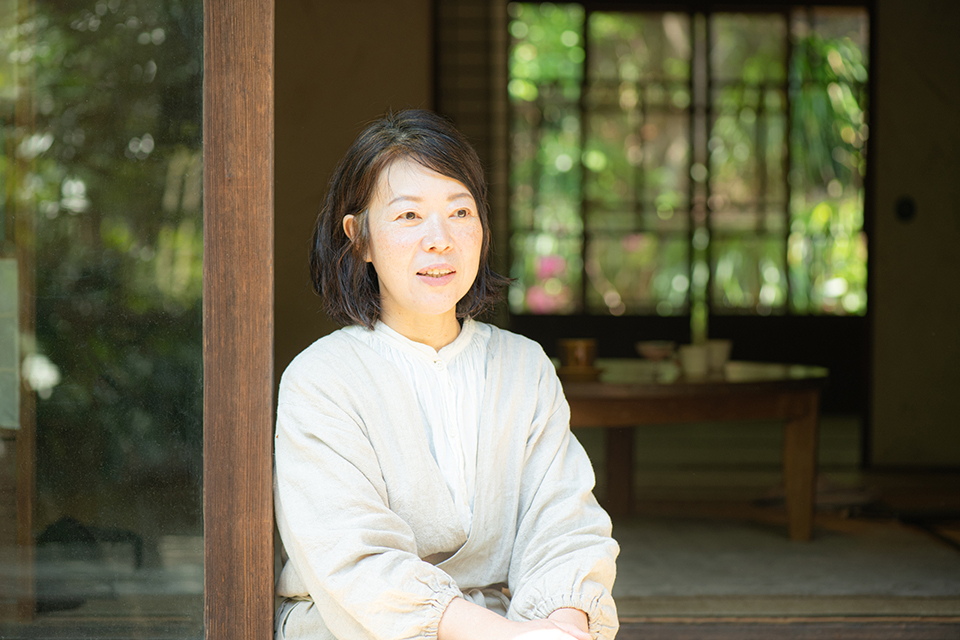

Yamada Nami lives with her family in a traditional-style house erected 90 years ago in the town of Hayama, Kanagawa, a place nestled between the mountains and the ocean where time slips by peacefully. She runs the Tabegoto Labo, an endeavor to pass on the wonder of traditional food, and holds classes on Japanese food culture in her home atelier.
We spoke to Yamada about her lifestyle in Hayama that she came to after leading a busy life in Tokyo and about her fascination with fermented foods. She also shared two recipes for fermented drinks that can be whipped up quickly.
Known for its Imperial Villa, Hayama is blessed with an abundance of nature that invokes a relaxed atmosphere. Yamada moved here about 10 years ago. Along a small street that looks like a movie set is Coya 1681, the home and atelier for Yamada’s family of three.
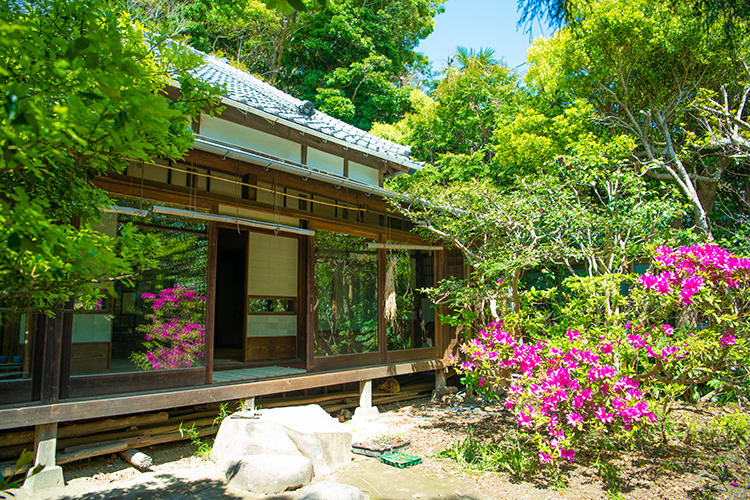
The garden at Coya 1681, lush with trees, echoes with beautiful bird songs
Wanting to pass on Japan’s food culture, Yamada holds classes on Japanese cuisine and yakuzen [medicinal foods for healing], on fermentation, and on baby food and food for kids. Each Monday, she runs Tataki, a store where she sells by weight vegetables picked in fields along with handmade miso, pickles, and other items. Seeing her live a tranquil life in a traditional 90-year-old house, it’s hard to imagine that she had been living in Tokyo until about 10 years ago, working furiously in the publishing industry.
“In my mid-twenties, while covering a story, I happened to hear a speech by Take Rinko from the Tokyo Yakuzen Institute. Her idea that ‘Japanese food is fundamentally yakuzen for the Japanese people’ struck a chord with me, and so I started studying with her. In my younger days, I had plenty of stamina even though I worked day and night. But as I entered my thirties, I sensed that my physical condition was changing. I had begun incorporating the ideas of yakuzen into my life, and wanting to start growing my own food, I rented a community agricultural plot to raise vegetables. I pickled the vegetables I harvested from the plot in brine and fermented rice bran. Nukazuke [pickling in brine and fermented rice bran] was very familiar to me because I had grown up watching my mother and grandmother making nukazuke. My health issues quickly cleared up after I changed my diet. This personal experience prompted me to teach others what my yakuzen teacher had taught me and what I had learned from my mother and grandmother.”
Yamada started the Tabegoto Labo as a way to convey to others the importance of daily meals and the magnificence of traditional foods. As more people joined her in growing vegetables, which she had started in a community agricultural plot, she ended up renting a field in Ibaraki prefecture. During all these activities, she kept looking for her ideal environment and eventually she happened upon her current lifestyle.
“I think the environment I grew up in as a child had a huge impact on me. Especially growing and eating our own vegetables. I craved that kind of simple lifestyle again, and while looking around for a place to live, we came across our current house. The house had been unused for about a year, and I was fearful for a moment because it was damp and dark. But the surroundings were amazing, so we decided to live in the house while fixing it up.”

The bright kitchen is flooded with natural light

Rows of handmade seasonings and preserves are on display
Yamada’s old house was originally a stately residence. Once they had fixed the place up, the old house seemed to come to life again, turning into a pleasant space. Yamada’s workplace is the spacious kitchen, which is bathed in sunlight. The dinner table is filled each day with their own vegetables, handmade fermented and preserved foods, and eggs collected every morning from the chickens running free in their garden.
“We label the eggs so we know which chicken laid which egg. Even though the chickens eat the same feed, their eggs have different shapes and colors, which is quite amazing. We rent a field a short distance away and grow a variety of vegetables each season. The tastes of freshly picked seasonal vegetables are next level.”

Chickens are free to range around the large garden and hill at the back of the house
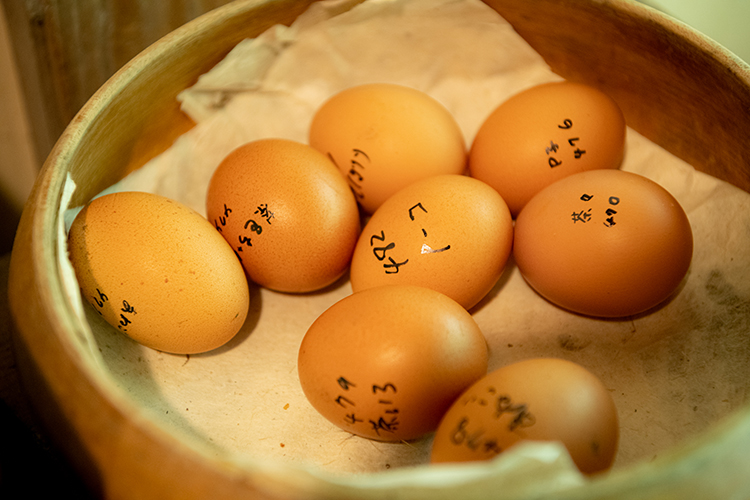
Eggs collected each morning are profuse in individuality
Since encountering the idea that Japanese food is healing food, Yamada has been cultivating vegetables and paying close attention to her diet, even while still living in Tokyo. We wondered how her lifestyle has changed by moving to Hayama.
“My body has instinctively adjusted to be in sync with the rhythm of nature, because you are in such close proximity here to the changes in nature. For example, when you start to hear the voices of bush warblers and you notice the scents of trees and plants becoming stronger, you know that summer is just around the corner. At the same time, things I couldn’t do in the city without consciously putting my mind to them, like seasonal handiwork or making preserves, I can get done here naturally and without effort. Things like making umeboshi [pickled plums] when the plums in the garden change color or making salted sansho [Japanese peppercorn] preserves when their buds swell. And I rarely get sick anymore because we eat seasonal foods and follow a traditional diet including fermented foods.”
The theme of Yamada’s classes is that traditional Japanese foods are a type of yakuzen perfectly aligned with the constitution of Japanese people and Japan’s climate and natural features. And among these foods, predictably fermented foods are indispensable.
“I’ve been holding classes for some 10 years and I’ve noticed a large uptick in the awareness of fermented foods in the last five or six years. People are trying their hand at making miso and umeboshi. And many of these people are young. I sense that the awareness of food in general has risen. So much so, that maybe I don’t need to teach these classes anymore. [laughs] Traditional Japanese fermented foods can be incorporated into your daily life quite easily, with a little handiwork. Nearly all of them make themselves if you just leave them alone. This is true of miso, pickles, and amazake [a sweet drink made from fermented rice]. Fermented foods are also gaining attention from a nutritional standpoint, as foods that prevent illnesses and preserve health, which is how I got into them. For some reason, we Japanese people feel relaxed and reassured when we have a bowl of miso soup in the morning. The charm of fermented foods is that that delicious miso soup is also medicinal and helps regulate the body.”
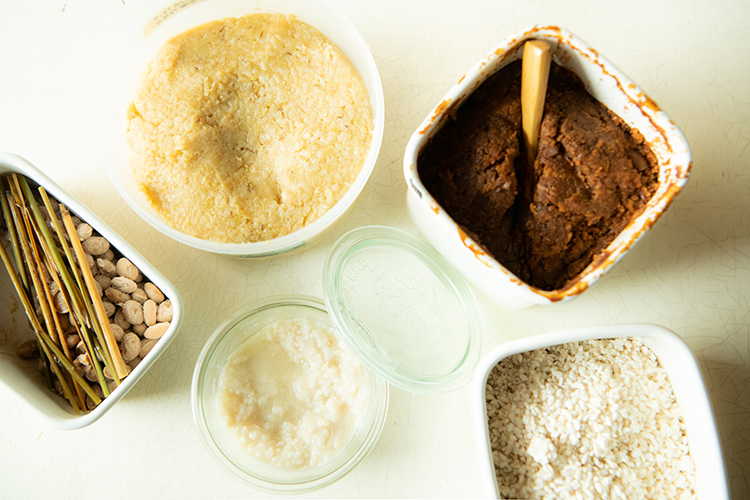
Miso, koji [rice malt], amazake, and natto — all homemade. Yamada’s son likes koji as a snack
“My son, who is in elementary school, is in charge of making white miso. White miso takes less time to ferment than other miso types, so the finish line is close enough that even kids have the patience to wait for it. He really enjoys making it. We make our own soy sauce too, but we ask an artisan to do the pressing process because it’s quite complex. Pickles are another essential fermented food. Making nukazuke with vegetables from our field is a time-honored practice at our home.”
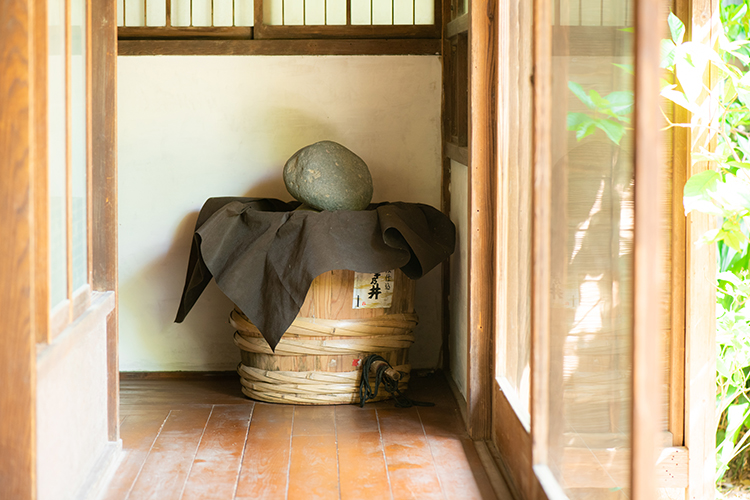
A large barrel in a corner of the engawa veranda is filled with takuanzuke [pickled radishes] of which they make about 100 a year
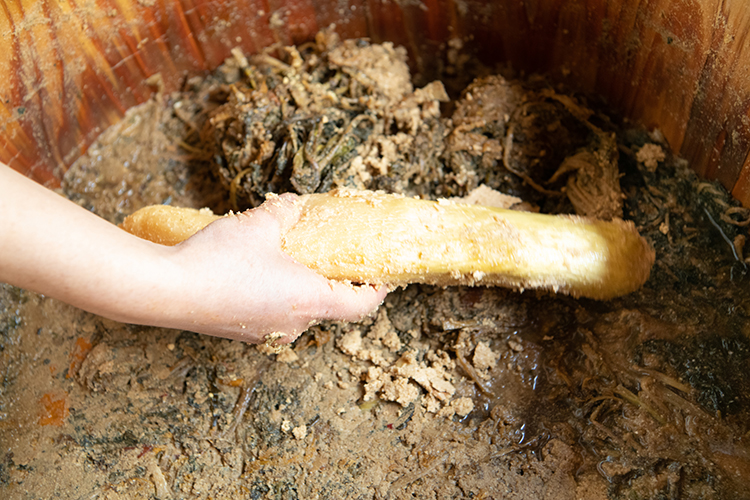
A daikon radish is soaked in the nuka rice bran along with mikan mandarin oranges and apple peelings. The tartness deepens the longer it is pickled.
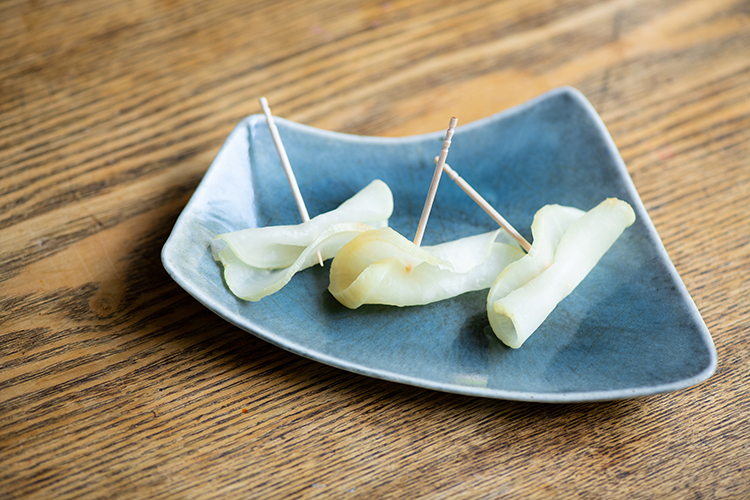
The piquant tartness tastes delicious together with the addictive crunchy texture
A hundred daikon radishes sounds like a lot, but they quickly disappear when eaten every day and sold at Tataki. Nukazuke is another must-have on the Yamada’s dinner table.
“When I started, I couldn’t make a good nukadoko [fermented rice bran bed] and I even ruined one in just a year. But once you get the hang of it, it’s not that hard. The key to nukadoko is dealing with oxygen. You’ll be fine once you master how to stir the nukadoko and how to let the air out. I recommend making cucumber nukazuke, which is the most popular in our home, because they turn delicious in just around 12 hours. Turnips and carrots are hard to mess up too. Most people think of nukazuke only in terms of vegetables, but meat and fish are also tasty nukazuke options. When I was working in Tokyo, I neglected my health because I was so busy. Now, my diet is full of nukazuke and other fermented dishes.”
Yamada says that it’s important to include fermented foods in your daily diet, so she gave us recipes for two delicious and easy-to-make drinks.
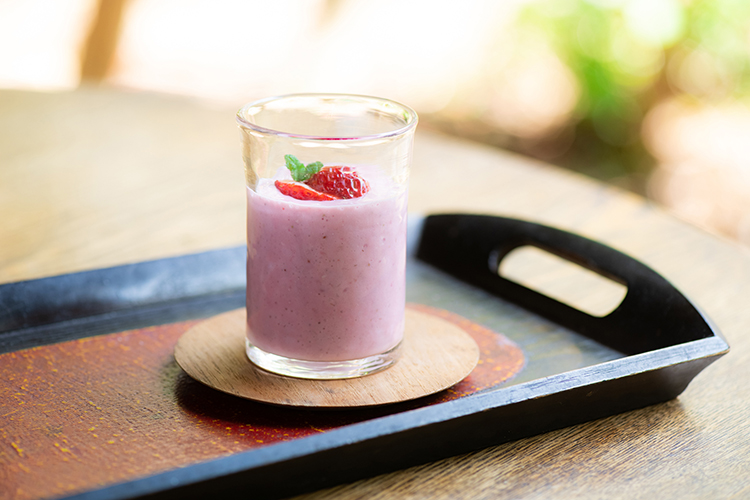
The bright pink color of this fermented smoothie pleases the eye. Add ice to enjoy a chilled, sweet-and-sour summer dessert. Besides strawberries, you can try bananas or peaches. Experiment with different arrangements for each season.

The sweetness of white miso makes it a surprisingly good ingredient in snacks. Adding white miso to spicy chai instantly boosts the richness and umami, for a drink that will delight your body.
And one last thing. Miso soup is a very easy fermented food to eat every day. The Yamada family always has a bowl each in the morning. In her book Miso Soup for the Twenty-Four Traditional Seasons (Wave Publishing), Yamada introduces 72 variations of miso soup for the 24 traditional seasons. Get your hands on a copy of the book, as it will definitely expand your world of miso soup.
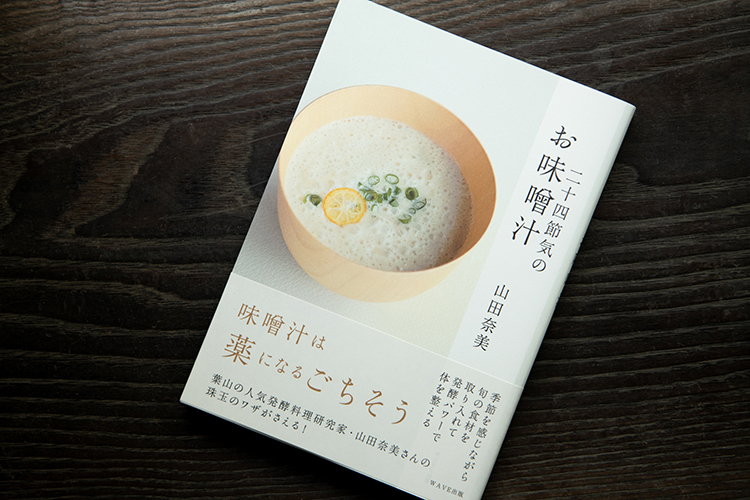
The cover depicts a bowl of white miso-based soup made in potage style from turnips and saké lees
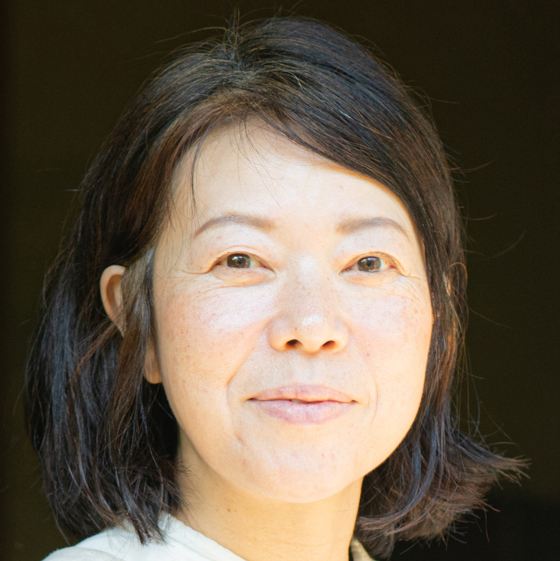
Expert in yakuzen and fermentation cooking, international traditional Chinese medicine chef, and owner of the Tabegoto Labo
Expert in yakuzen and fermentation cooking, international traditional Chinese medicine chef, and owner of the Tabegoto Labo
Under Take Rinko from the Tokyo Yakuzen Institute, Yamada studied oriental medicine, yakuzen theory, and diets to preserve health. In addition to providing fermented food and yakuzen recipes and explanations in magazines and websites, she teaches classes on Japanese cuisine and yakuzen, on seasonal food preparations, on fermentation, and on baby food at her atelier Coya 1681 in Hayama, Kanagawa. Her activities passing on Japanese food culture and handiwork and teaching about seasonal diets to preserve health that are gentle on the body have gained support from all generations. Yamada’s published works include Housework for a Life Blessed with Traditional Wisdom (X-Knowledge), Nukazuke Basics: Starting and Continuing (Graphic-sha Publishing), Seasonal Pickles (Ie-no-Hikari Association), and Soup for Tiring Days; Soup for Active Days (Bunka Publishing Bureau).